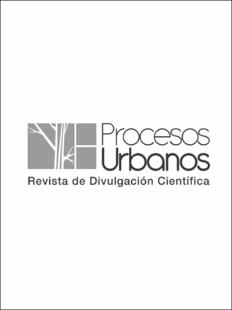Mostrar el registro sencillo del ítem
BUENOS EJEMPLOS EN LA PRÁCTICA DE LA CONSTRUCCIÓN SOSTENIBLE EN EL MUNDO CONTEMPORÁNEO
| dc.contributor.author | Cárdenas Priego, Josué Ramón | |
| dc.date.accessioned | 2022-09-21T21:50:22Z | |
| dc.date.available | 2022-09-21T21:50:22Z | |
| dc.date.issued | 2014-01-01 | |
| dc.identifier.issn | 2422-085X | spa |
| dc.identifier.uri | https://repositorio.cecar.edu.co/handle/cecar/3205 | |
| dc.description.abstract | En la última década la industria de la vivienda en América Latina ha logrado reducir el rezago habitacional considerablemente, pero en el camino por abatir la falta de viviendas se ha generado un crecimiento urbano desordenado que está deteriorando la calidad de vida de la población. En este contexto ¿es posible hablar de desarrollo sustentable?. El objetivo del presente artículo es presentar un recorrido por el estado del arte en materia del desarrollo de arquitecturas, enfocadas bajo el concepto de desarrollo sostenible a nivel mundial. Nace de una investigación de corte cualitativo, en la que se utilizó una revisión documental sobre el concepto de desarrollo sostenible y las buenas prácticas de éste en la arquitectura y el urbanismo de hoy;en ella la observación directa se convierte en la herramienta precisa para constatar las potencialidades de los ejemplos que se ofrecen como representativos de unas buenas prácticas de una arquitectura sostenible en el mundo contemporáneo. La discusión que plantea, gira en torno a la desmitificación de algunas interpretaciones forjadas a partir del concepto de desarrollo sostenible, lo que genera una crítica a la forma como ha evolucionado el concepto, y se presentan algunos buenos ejemplos de cómo desarrollar una arquitectura amigable con el planeta. Como conclusión se plantea llamar al urbanismo sin ningún adherente de (bioclimático, ecológico, sustentable), un urbanismo capaz de responder a las condiciones singulares del clima y territorio, entendiendo que cada situación geográfica genera un diseño característico y diferente con respecto a otros lugares. | |
| dc.description.abstract | In the last decade the industry of the housing in Latin America has managed to reduce and leave behind housing deficit considerably, but in the way for bringing down the lack of housings there has been generated an disorder urban growth that is spoiling the quality of life of the population, in this context is it possible to speak about sustainable development? The aim of the present article is to present a tour for the state of the art as for the development of architectures, focused under the concept of sustainable development worldwide. It begins of an investigation of qualitative cut, in which a documentary review was in use on the concept of sustainable development and the good practices of this one in the architecture and the today urbanism, in it the direct observation turns into the precise tool to state the potentials of the examples that offer like representative as a few good practices of a sustainable architecture in the contemporary world. The discussion that it raises, turns environment to the debunking of some interpretations developed from the concept of sustainable development, which generates a critique to the form since has evolved the concept, and they present some good examples of how developing an friendly architecture with the planet. As a conclusion considers to call to the urbanism without any adherent of (bioclimatic, ecological, sustainable), an urbanism capable of answering to the singular conditions of the climate and territory, understanding that every geographical situation generates a typical and different design with regard to other places. | |
| dc.format.extent | 10 Páginas | spa |
| dc.format.mimetype | application/pdf | spa |
| dc.language.iso | spa | spa |
| dc.publisher | Corporación Universitaria del Caribe - CECAR | spa |
| dc.rights.uri | https://creativecommons.org/licenses/by-sa/4.0/ | spa |
| dc.source | https://revistas.cecar.edu.co/index.php/procesos-urbanos/article/view/24/22 | spa |
| dc.title | BUENOS EJEMPLOS EN LA PRÁCTICA DE LA CONSTRUCCIÓN SOSTENIBLE EN EL MUNDO CONTEMPORÁNEO | |
| dc.type | Artículo de revista | spa |
| dc.rights.license | Atribución-CompartirIgual 4.0 Internacional (CC BY-SA 4.0) | spa |
| dc.identifier.doi | 10.21892/2422085X.24 | |
| dc.identifier.eissn | 2500-5200 | spa |
| dc.identifier.url | https://doi.org/10.21892/2422085X.24 | |
| dc.publisher.place | Sincelejo | spa |
| dc.relation.citationendpage | 10 | spa |
| dc.relation.citationissue | 1 | spa |
| dc.relation.citationstartpage | 1 | spa |
| dc.relation.citationvolume | 1 | spa |
| dc.relation.ispartofjournal | PROCESOS URBANOS | spa |
| dc.relation.references | Annan, Koffi, A (2005) Objetivos del desarrollo del milenio, informe del 2005. Editorial Banco Mundial. | spa |
| dc.relation.references | Higuera. Ester. Urbanismo Bioclimático. Editorial Gustavo Gili. 2006. | spa |
| dc.relation.references | Leal del Castillo, Gabriel (2006). Ciudad, Medio Ambiente y Sostenibilidad. Ecoe ediciones. | spa |
| dc.relation.references | Organización de las Naciones Unidas. Guías de la Agenda 21. Editorial CNUMAD, 1992. | spa |
| dc.relation.references | Wackernagel, Mathis y William Rees (2001). Nuestra Huella Ecológica, Reduciendo el Impacto Humano sobre la Tierra. Ediciones LOM. Santiago de Chile, 2001. | spa |
| dc.relation.references | Wolfensohn, James D. (2005) Informe sobre el desarrollo Mundial. Editorial Banco Mundial. | spa |
| dc.rights.accessrights | info:eu-repo/semantics/openAccess | spa |
| dc.subject.proposal | Urbanismo | |
| dc.subject.proposal | sostenibilidad | |
| dc.subject.proposal | medio ambiente | |
| dc.subject.proposal | energía alternativa | |
| dc.subject.proposal | eficiencia energética | |
| dc.subject.proposal | Urbanism | |
| dc.subject.proposal | sustainability | |
| dc.subject.proposal | environment | |
| dc.subject.proposal | alternative energy | |
| dc.subject.proposal | energy efficiency | |
| dc.title.translated | Good examples in practice of sustainable construction in the contemporary world | |
| dc.type.coar | http://purl.org/coar/resource_type/c_2df8fbb1 | spa |
| dc.type.content | Text | spa |
| dc.type.driver | info:eu-repo/semantics/article | spa |
| dc.type.redcol | http://purl.org/redcol/resource_type/ART | spa |
| dc.type.version | info:eu-repo/semantics/publishedVersion | spa |
| dc.type.coarversion | http://purl.org/coar/version/c_970fb48d4fbd8a85 | spa |
| dc.rights.coar | http://purl.org/coar/access_right/c_abf2 | spa |



